SPLACES.STUDIO
 SPLACES.STUDIO | Saulux
SPLACES.STUDIO | Saulux
SPLACES.STUDIO brings together artists, scientists, and engineers. How do you build synergy between such diverse disciplines in your creative process?
Andy Shibanov:
Honestly, it sounds complex, but the answer is pretty straightforward: everyone on our team brings strong hard skills from their core domain whether it’s programming, lighting design, engineering, or generative music. But what truly connects us is that each team member is also an artist — with a background in either fine arts or science-art. That’s the sweet spot where magic happens.
My own roots are in directing and creative production for commercials, which means I’ve spent years navigating big, chaotic, multi-disciplinary teams from DOPs to animators to sound designers. It’s second nature to me now. Working on large-scale, immersive science-art installations is not all that different just deeper, more layered, and more philosophically charged.
At SPLACES.STUDIO, we don’t just combine disciplines — we weave them together. Our approach is less about managing differences and more about finding a shared artistic language that’s rooted in both scientific curiosity and aesthetic sensitivity. That’s what allows us to co-create living, breathing systems where technology and nature can actually speak to one another.
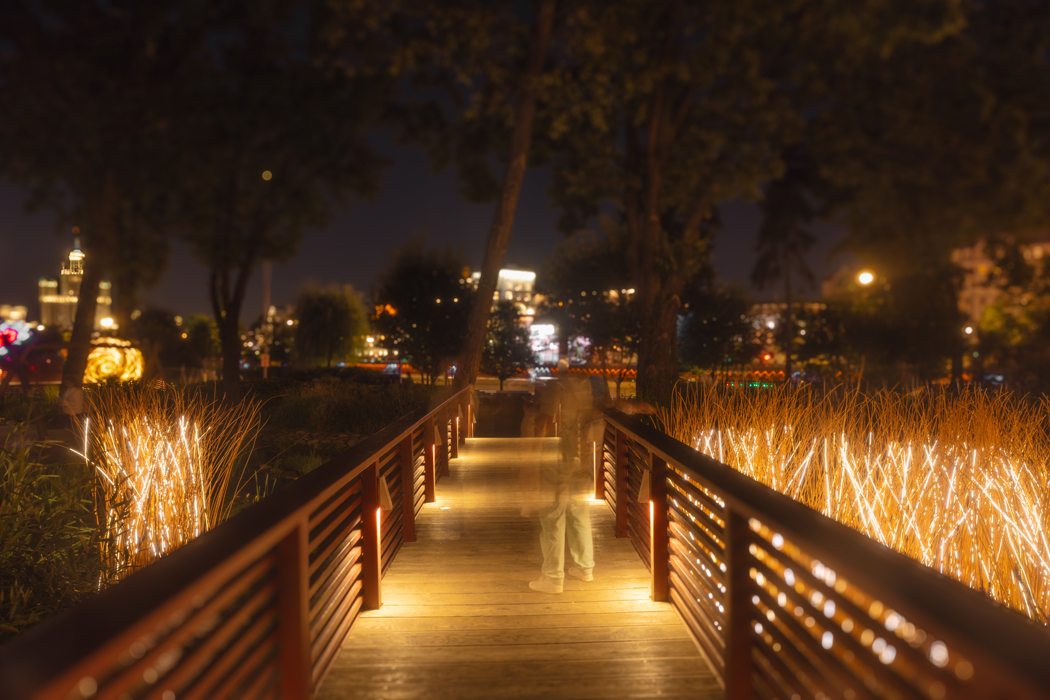 SPLACES.STUDIO | Saulux
SPLACES.STUDIO | Saulux
Many of your works are immersive and interactive. What role does audience participation play in your vision of art?
Khristina Ots:
In our projects, we aim not just to represent nature, but to create conditions where it can be experienced as an active presence. Public art, for us, is a tool for transforming familiar spaces and opening up new modes of attention — where people can feel differently. Many of our works take the form of public art because we believe it can act as a portal into a natural environment.
We see the audience as an active element that helps to activate space and form a system of relationships within the environment. In this sense, our installations function as mediators between people and nature through technological art. Through sensory, immersive formats, we explore how art can become a space where nature speaks back to us. Participation, in this context, is not only about interaction, but about attunement — finding new ways to listen, to slow down, and to enter into a dialogue with the living world. We hope that this is a model that later can be expanded by our guests into a daily life practice.
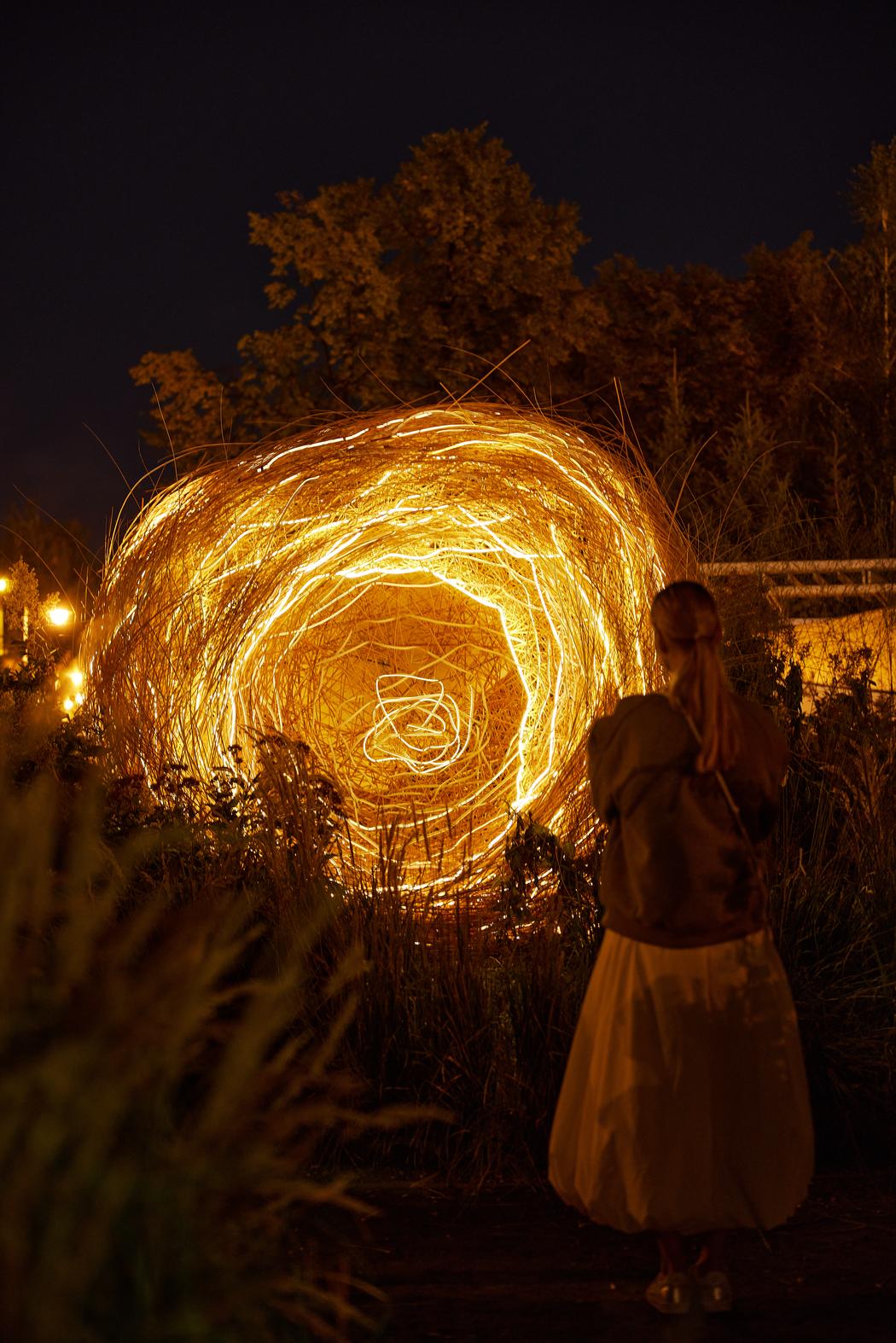 SPLACES.STUDIO | Nidum
SPLACES.STUDIO | Nidum
How do you define “nature-driven technologies,” and how do they differ from conventional eco-design or biomimicry?
Khristina Ots:
Nature and technology are often treated as opposites — but in reality, they are deeply interconnected. Continuing to think of them as separate domains only reinforces a false divide. At SPLACES.STUDIO, we believe in thinking with nature, not just about it.
We define nature-driven technologies as systems that are guided by natural impulses — by rhythms, forces, data, and logic found in the natural world. Unlike conventional eco-design, which often aims to reduce harm within existing industrial paradigms, or biomimicry, which imitates nature’s forms and functions, nature-driven technologies are co-developed with natural processes. They operate in sync with ecological systems rather than merely referencing them.
In our artistic practice, we use this approach to imagine alternative technological futures — ones where machines listen to forests, structures breathe with the wind, and data is derived from the behavior of physical laws. These speculative technologies aren’t just poetic; they also point toward real possibilities for rethinking sustainability in science, architecture, and industry.
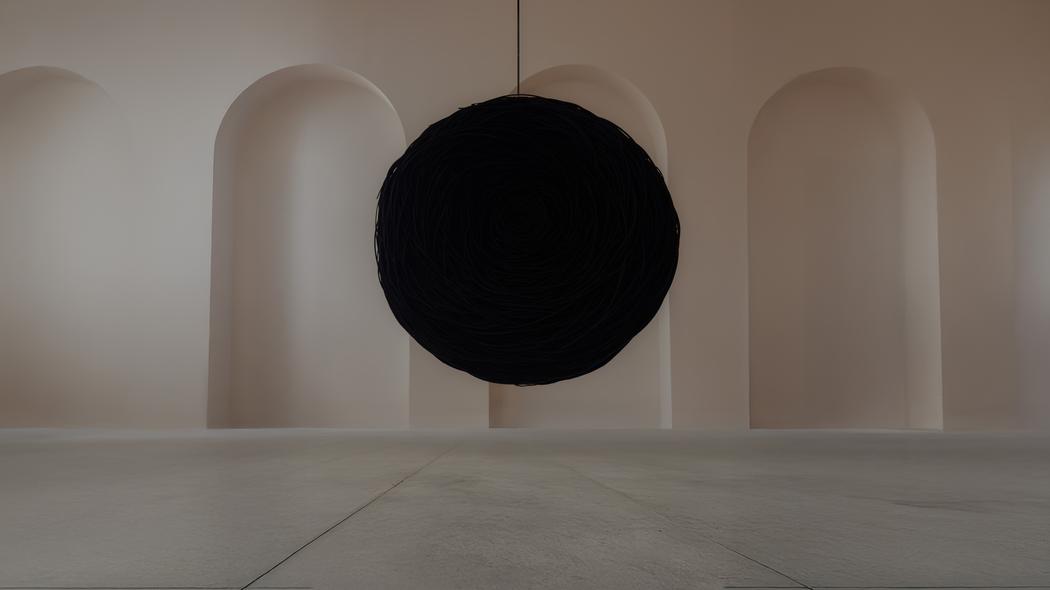 SPLACES.STUDIO | Black Nidum
SPLACES.STUDIO | Black Nidum
In your work, AI is not just a tool but a collaborator. How do you determine the boundaries between human intention and machine contribution?
Andy Shibanov:
We work with AI in a lot of different ways, from machine learning models to LLMs, and yeah, most of the time it starts out as a tool. But honestly, it doesn’t stay just a tool for long. When you’re using AI to analyze natural systems or help prototype interactive environments, at some point it starts offering things back: unexpected patterns, wild connections, stuff that sparks new ideas. That’s when it starts to feel more like a creative partner.
We use LLMs, for example, to help us process data, debug, code smarter, or even brainstorm. It’s like having another mind in the room, not a human one, but still surprisingly collaborative. It helps us move faster and go deeper without needing a 20-person team.
I wouldn’t say we draw a clear boundary between human and machine roles. It’s more like a conversation : we set the intention, the AI responds, and we riff on that. Sometimes it does something totally weird, and we lean into it. That’s the exciting part. We’re not outsourcing creativity, we’re expanding it.
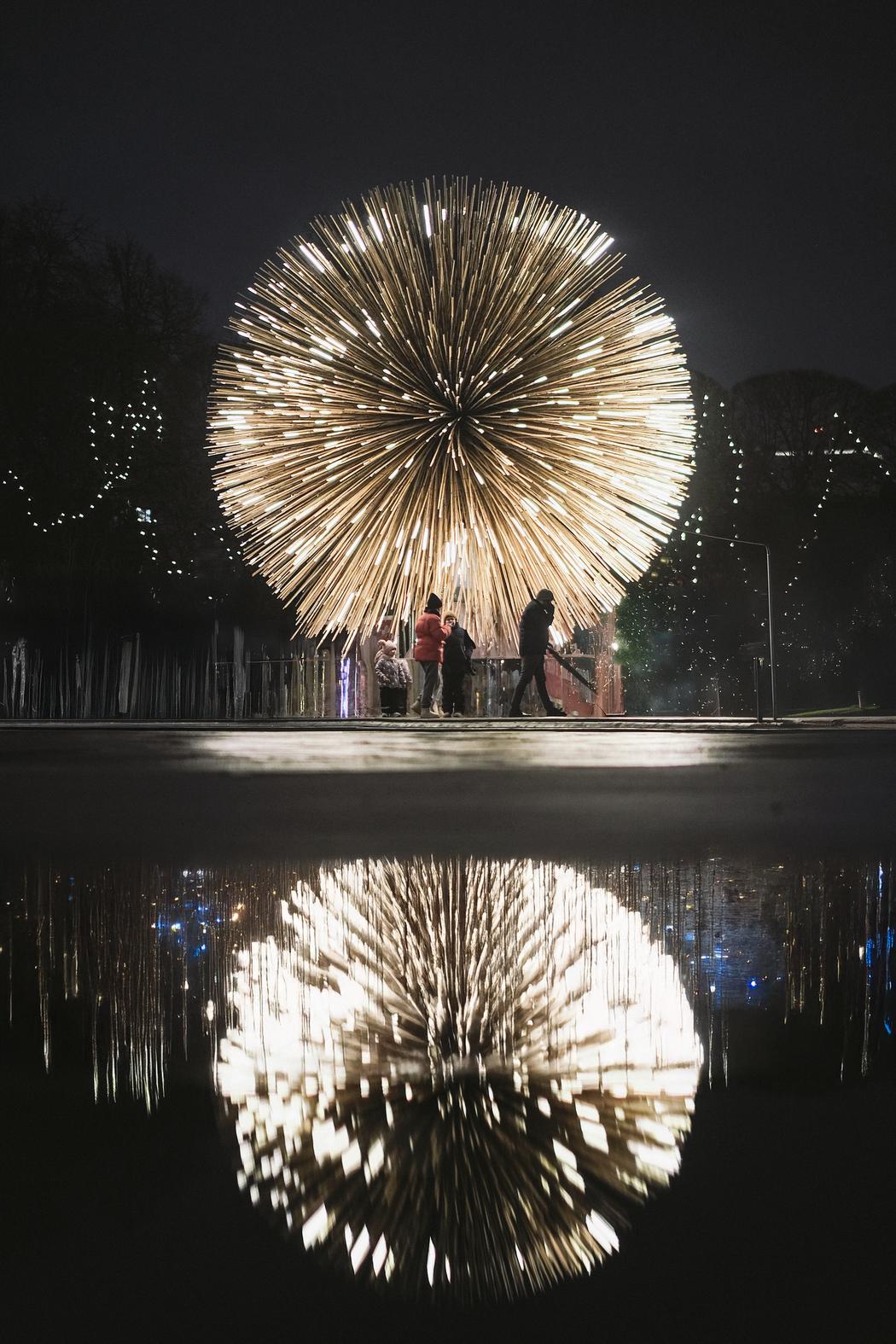 SPLACES.STUDIO | Fluxate
SPLACES.STUDIO | Fluxate
What was the most complex technical challenge you faced in creating a sculpture, and how did your interdisciplinary team solve it?
Andy Shibanov:
We’ve faced two equally complex technical challenges in our recent work, each in very different ways.
The first was our largest sculpture, Fluxate: a 7-meter-wide “Sun” made of 3,000 long bamboo rods, each carrying a 1-meter addressable LED strip. In total, it formed a 3-kilometer programmable light matrix mapped onto a spherical outdoor sculpture. It had to endure three months of harsh winter conditions: freezing temperatures, humidity, and temperature swings, without failure. We developed a system that pulls real-time solar activity data from satellite APIs and translates it into dynamic light and sound using TouchDesigner and Max/MSP. Managing thousands of synchronized LEDs in spherical geometry, outdoors, under those conditions: that was a first for us, and possibly for anyone.
The second was our newest piece, data.relic: a half-ton travertine sculpture that’s slowly eroded in real time by a closed-loop sandblasting system. It was our attempt to simulate geological weathering using a common industrial process. The challenge here was twofold: no one had used sandblasting as a method of sculpting stone for exhibition before, especially not in a continuous way; and the entire installation had to operate indoors, in a museum space, silently and safely, with zero sand leakage and full air/noise isolation. We engineered a sealed environment where sand constantly recirculates and reshapes the sculpture: autonomously, for a month.
Each challenge pushed us to invent new technical frameworks, combining software, mechanics, sculpture, and sound into something neither purely industrial nor purely artistic.
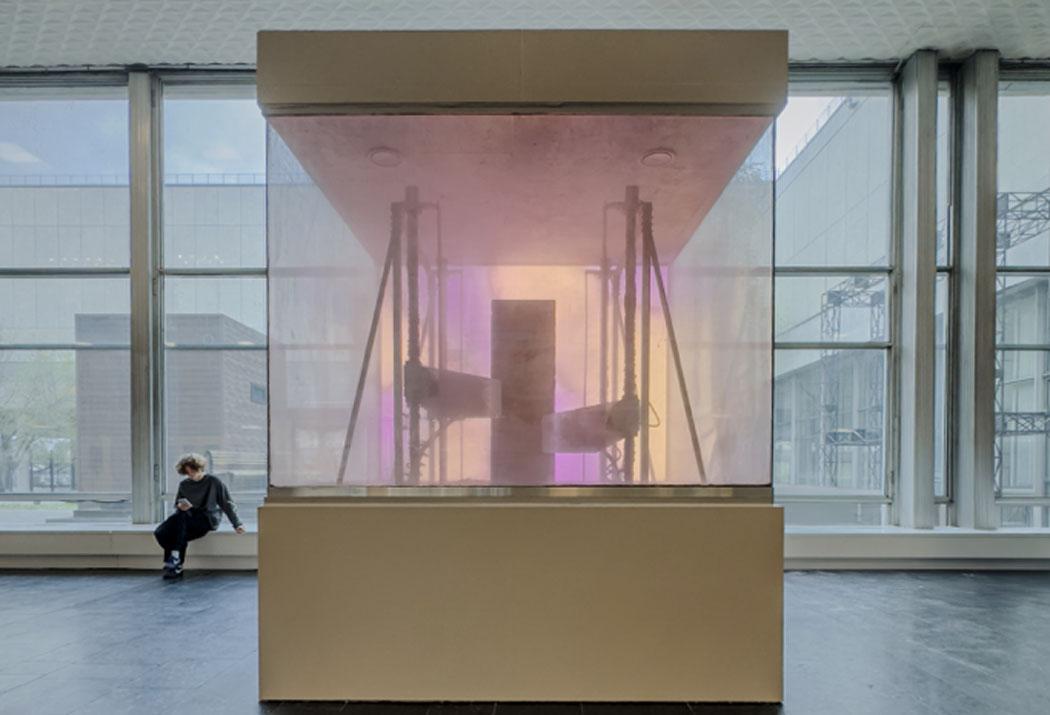
What emotional or intellectual response do you hope viewers experience when encountering your installations in public or gallery spaces?
Andy Shibanov:
What I truly enjoy is seeing people encounter our sculptures in two very different states: first, as a static physical form: quiet, unlit, almost like a traditional object; and then again, when the sculpture “activates” and transforms into something else entirely.
When the AI begins processing data, the light starts responding, music is generated by custom algorithms, and the audience realizes they can touch the piece, speak to it, or even affect it with their presence: the whole experience becomes alive, layered, and deeply interactive.
There’s this beautiful moment of pleasant surprise that I see again and again: people smile, laugh, lean in with curiosity. It’s like they’re discovering that what seemed like a natural or even familiar object: something you might expect to see in a museum or a park: actually contains a hidden intelligence, a living system with meaning.
That moment of wonder: when perception shifts and new layers unfold: is what we hope to create — emotionally rich, intellectually engaging, and sensorially unexpected.
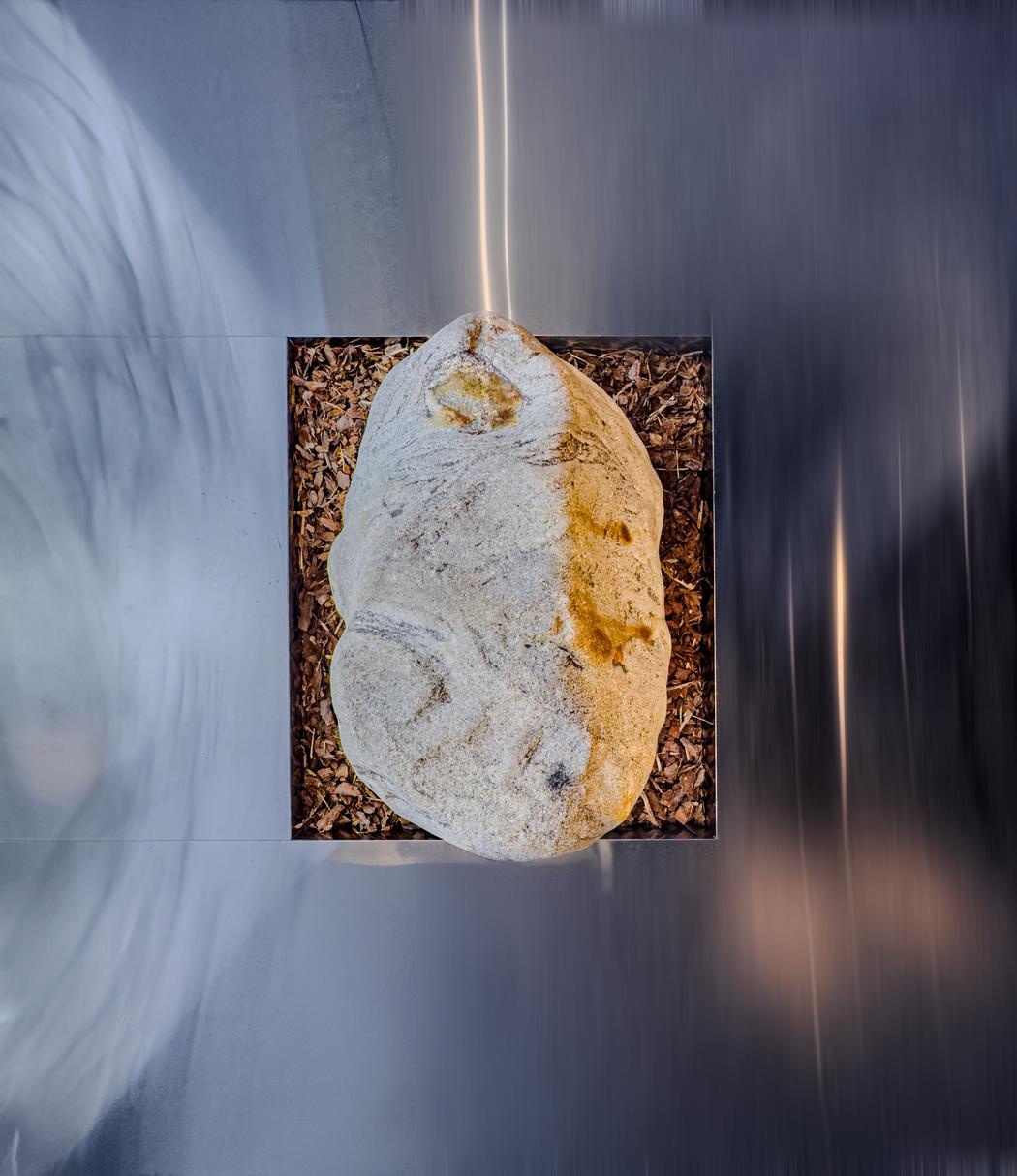 SPLACES.STUDIO | Megalith
SPLACES.STUDIO | Megalith
You collaborate with specialists in fields like dendrology and ornithology. Can you share an example of how such collaboration enriched a specific project?
Khristina Ots:
Art & science field gives us opportunity to seek out knew artistic language. Collaboration with scientists is central to our practice at SPLACES.STUDIO, as it allows us to move beyond metaphor and into deep, research-based engagement with the natural world. In our Nidum series, for example, we worked closely with ornithologists to explore how we might access the umwelt of birds — their perceptual world, so different from our own. In the context of the Anthropocene, we believe that rethinking our relationship with nature is no longer optional; it’s a necessity. But how can we begin to understand something governed by such radically different laws of perception and communication?
With the help of ornithologists, we studied archival recordings and scientific data about bird calls — particularly those of extinct or endangered species. This data became the foundation for an artistic system that attempts to restore and reimagine these lost voices. Our role as artists is to translate this knowledge into multisensory experiences — sculptural, sonic, and spatial — that invite the audience to connect emotionally and viscerally with the more-than-human world.

Leave a Reply